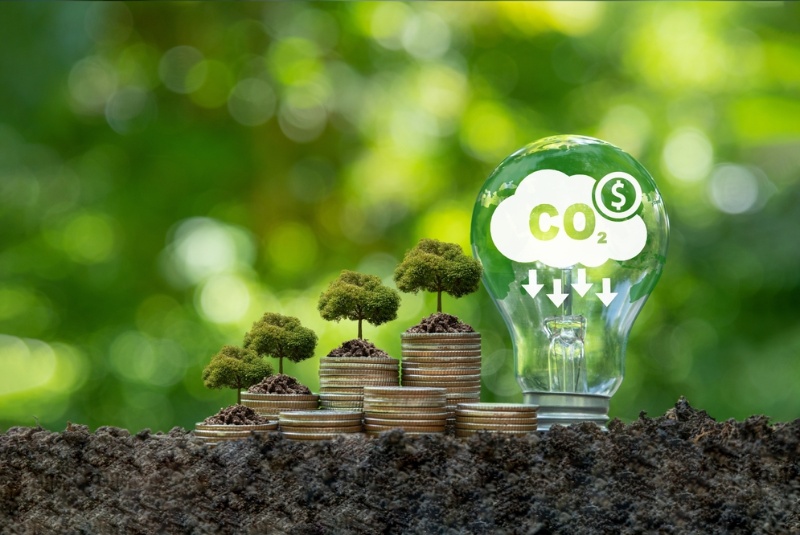When we shop, price tags often guide our decisions. It’s a simple, measurable factor that lets us compare items, but it captures only a fraction of a product's true cost—especially when considering its impact on the environment. Hidden environmental costs associated with the manufacturing, use, and disposal of products are often overshadowed by their monetary price. These hidden costs can have lasting effects on our planet, making it essential to evaluate products beyond their immediate price tags.
1. Understanding Environmental Costs
Environmental costs, often called externalities, refer to the unintended side effects of commercial activities that aren’t directly absorbed by the businesses or consumers involved. For example, pollutants released during manufacturing, deforestation for raw materials, and greenhouse gas emissions from transporting goods all come with long-term effects. These external costs impact society in the form of health problems, lost biodiversity, and climatic disruptions.
A. The Manufacturing Phase: The creation of a product usually involves extracting raw materials, processing them, and assembling the final item. This process often leads to:
- Deforestation: Removing forests for resources reduces biodiversity and increases atmospheric carbon dioxide.
- Water Pollution: Industrial production can release harmful chemicals into waterways, harming marine ecosystems and human health.
- Greenhouse Gas Emissions: Factories emit gases that contribute to global warming, making manufacturing one of the largest sources of greenhouse gases.
B. The Usage Phase: A product’s environmental impact doesn’t end once it’s sold. Products like electronics and vehicles continue to exert pressure on the environment throughout their lifespan:
- Electricity Consumption: Powering electronic devices and appliances requires energy, which often comes from fossil fuels.
- Resource Depletion: Regular use of resources, like water in certain appliances, adds to resource depletion over time.
C. The Disposal Phase: How we dispose of a product has lasting environmental effects, often greater than expected:
- Landfill Waste: Products that end up in landfills release methane gas, which is more potent than carbon dioxide in trapping heat.
- Electronic Waste: Electronics often contain hazardous chemicals, which can leach into the soil and water if not disposed of correctly.
- Plastic Pollution: Non-biodegradable plastics pollute oceans, harming marine life and ecosystems.
2. Why Should Consumers Care?
Environmental repercussions from consumer choices often circle back to affect society and individual well-being. Here are some ways these hidden costs impact us all:
- Poor Air Quality: Pollution from production contributes to poor air quality, which is linked to respiratory diseases and other health issues.
- Food Supply Chains: Deforestation and disrupted ecosystems affect agricultural production, leading to food scarcity and increased prices.
- Climate Change: Carbon emissions from products and industries accelerate climate change, leading to extreme weather events, rising sea levels, and global instability.
As climate change continues to affect daily life and regulations become stricter, companies may face higher operational costs, which could ultimately be passed on to consumers. These financial costs add up over time, emphasizing the importance of sustainable choices.
3. Empowering Consumers with Knowledge
Becoming aware of the environmental costs associated with products can help consumers make more sustainable choices. Here’s how knowledge can empower better decisions:
- Transparency: Companies should be transparent about their supply chains, manufacturing processes, and waste management practices, helping consumers understand the environmental footprint of their products.
- Certification Labels: Independent organizations can introduce certification labels that indicate a product’s environmental impact, making it easier for consumers to identify sustainable options.
- Technology & Apps: Apps and online tools can help track the ecological impact of products, allowing consumers to compare environmental costs alongside financial prices.
When companies and organizations share environmental information, it empowers consumers to make choices that align with their values and environmental goals.

4. Making Sustainable Choices
Recognizing environmental costs doesn’t mean consumers should stop buying products altogether. Instead, small but significant changes can make a difference. Here’s how consumers can shop more sustainably:
- Choose Certified Products: Look for eco-friendly certifications like ENERGY STAR, Fair Trade, and USDA Organic to support companies that prioritize environmental and ethical standards.
- Reduce Single-Use Items: Reducing reliance on single-use plastics and disposable products helps decrease waste and lowers demand for resource-heavy manufacturing processes.
- Support Sustainable Brands: Companies with sustainable practices are more likely to invest in reducing their carbon footprint and minimizing waste. Supporting these brands reinforces the demand for environmentally responsible products.
- Recycle and Repurpose: Whenever possible, recycle old products and find creative ways to repurpose items rather than throwing them away. Repurposing saves resources and reduces landfill waste.
Sustainable choices don’t need to be complex. By making small adjustments, consumers can contribute to reducing environmental impacts and setting positive trends in the market.
5. Government and Corporate Responsibilities
While individual choices are important, broader changes at the corporate and government levels are essential to significantly reduce environmental costs. Here’s how these entities can play their part:
- Government Regulations: Governments can introduce policies requiring industries to limit their emissions, minimize waste, and adopt eco-friendly practices. These regulations ensure that companies remain accountable for their environmental impact.
- Cleaner Technologies: Industries can invest in clean energy technologies, such as renewable energy sources and low-emission production methods, to reduce their overall ecological footprint.
- Collaborative Efforts: Governments, corporations, and NGOs can collaborate to create sustainable supply chains, enabling a more consistent approach to environmental responsibility across industries.
When companies and governments align on sustainability goals, the combined impact can drive significant positive change. Stricter regulations, along with collaborative efforts, make it easier to achieve eco-friendly standards across entire industries.
6. The Long-Term Benefits of Considering Environmental Costs
Evaluating products based on environmental costs has long-term benefits, both for the planet and for future generations. Sustainable practices and environmentally conscious consumption lead to a healthier planet, less resource depletion, and cleaner air and water for all. Here’s how understanding environmental costs translates into real-world benefits:
- Reduced Climate Impact: Lower emissions and sustainable practices help curb the effects of climate change, protecting vulnerable ecosystems and reducing the frequency of extreme weather events.
- Improved Public Health: By reducing pollution, we also reduce health risks like respiratory diseases and waterborne illnesses, leading to better quality of life and lower healthcare costs.
- Increased Biodiversity: Protecting forests and water bodies preserves biodiversity, which is essential for balanced ecosystems and agriculture.
Ultimately, addressing environmental costs leads to more resilient communities, healthier ecosystems, and a more stable global climate. Consumers, companies, and governments all benefit from a balanced, sustainable approach to production and consumption.
The immediate price tag of a product may give us a quick understanding of its financial cost, but it’s essential to look beyond monetary figures and consider the hidden environmental costs as well. By becoming conscious consumers, understanding the broader implications of our choices, and advocating for transparency and sustainability, we can pave the way for a world where products reflect their true impact on our planet.




